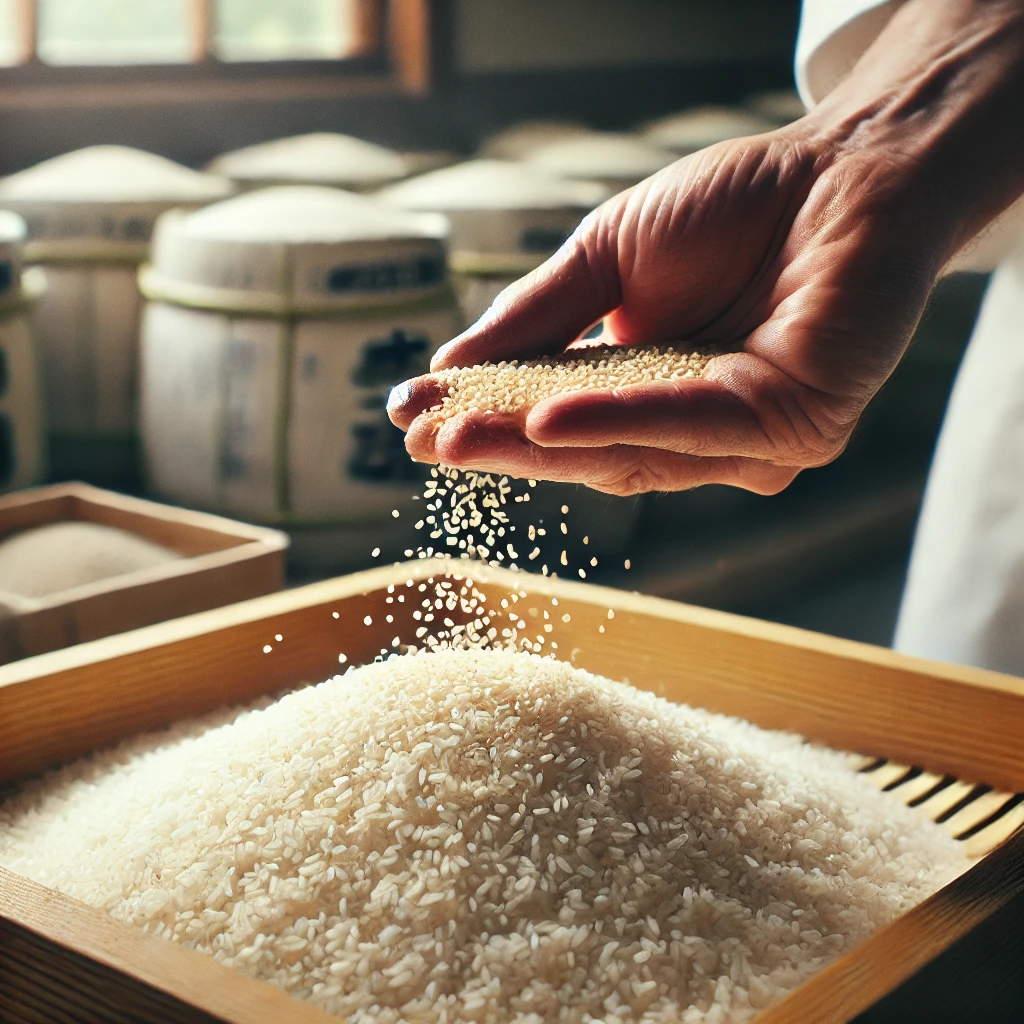Hello! This is Mana. Recently, I have been studying for the sake certification, and I’m amazed at how sake is made. This time, I want to introduce you to “fermentation,” which is fundamental in the process of making sake. Do you know what fermentation is? Fermentation is the process of transforming raw materials using microorganisms, and sake is also made using this fermentation process. Let’s take a look at the basics of sake making right away!
What is fermentation?
First, what exactly is “fermentation”? Fermentation is the process where microorganisms convert sugars into alcohol and acids. There are many fermented products worldwide, such as wine, beer, and bread, and sake is one of them. In particular, the process known as “alcoholic fermentation” is crucial for sake.
The main ingredient used in sake making is rice. However, rice does not contain sugar directly. This is where “koji” and “yeast” play important roles. These two work together to convert rice into sugar, and then that sugar into alcohol, through a complex fermentation process.
The role of koji: The magician that turns starch into sugar
Koji is indispensable in sake making. Koji is a mold (koji mold) that is propagated in rice, which produces “saccharifying enzymes” that convert starch into sugar. Without these saccharifying enzymes, rice cannot be transformed into the sugars needed for alcoholic fermentation.
In sake production, a type of koji mold called “yellow koji mold” is mainly used. This mold propagates in steamed rice, preparing it to convert starch into sugar. This saccharification process is essential for creating the unique sweetness and flavor of sake.
There are also other types of koji molds like “black koji mold” and “white koji mold,” but yellow koji mold is most commonly used in sake making. Black koji mold is used in the making of Okinawan awamori, and white koji mold is used in shochu, showing how different molds can influence the character of the drink.
The role of yeast: The hard worker that turns sugar into alcohol
Next, let’s talk about “yeast.” Yeast is a microorganism that plays a role in converting the sugar produced by koji into alcohol and carbon dioxide. This process is called “alcoholic fermentation.” As yeast transforms the sugars into alcohol, the sake gradually reaches completion.
There are several types of yeast, and they significantly affect the aroma and taste of sake. For example, “ginjo yeast” produces a fruity aroma, and there are yeasts that give off scents of apples or melons. The choice of yeast can make a huge difference, even if the same rice and koji are used, resulting in sake with entirely different flavors and aromas.
Interestingly, sake features a unique process called “parallel multiple fermentation.” Unlike the straightforward fermentation of wines, in sake, saccharification and alcoholic fermentation occur simultaneously. This is a rare method of fermentation worldwide. It’s complex, but perhaps that’s why it creates such a deep and varied flavor profile.
The mechanism of alcoholic fermentation
Let’s take a closer look at the mechanism of alcoholic fermentation. There are two types of fermentation, but wines, for example, undergo “simple fermentation,” where the sugars contained in grapes are directly converted into alcohol by yeast. In contrast, sake undergoes what is called “complex fermentation,” where the starch in rice is first converted into sugar by koji mold, and then this sugar is converted into alcohol by yeast, all happening simultaneously.

Sake production starts with steaming rice, then adding koji mold to perform saccharification, and finally introducing yeast to proceed with alcoholic fermentation. The simultaneous progression of these two processes results in a complex and deep flavor. This unique fermentation method contributes to the distinctive aroma and taste of sake.
Key points in sake production
While we’ve briefly explained the fermentation process, particularly important in sake production are the balance of “koji” and “yeast.” How well koji can convert the starch in rice into sugar, and how effectively yeast can convert that sugar into alcohol, are crucial for determining the flavor of the sake.
Temperature control is also vitally important. If fermentation progresses too much, the sake can spoil, so maintaining the right temperature is a skill of the craftsman. Particularly for premium sakes like “ginjo” or “daiginjo,” fermenting at a low temperature slowly brings out fruity and aromatic flavors.
Summary
To summarize what we’ve learned from this study, sake is made from rice with the help of two microorganisms, “koji” and “yeast.” Koji converts the starch in rice into sugar, and yeast then converts this sugar into alcohol. Additionally, sake undergoes a unique process called “parallel multiple fermentation,” where saccharification and alcoholic fermentation occur simultaneously.
It’s this fermentation process that gives sake its profound and diverse flavors. Next time, I’d like to take a closer look at how this fermentation process actually progresses in the sake manufacturing process!



コメント